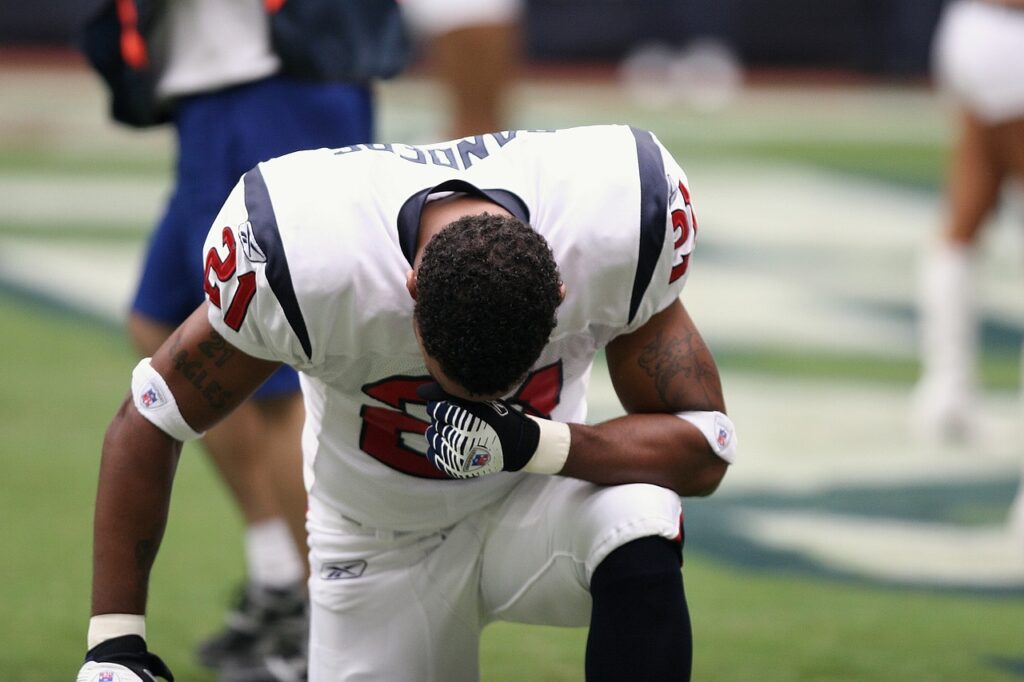UJBLOG Facilitator
Read the below background post and leave a Comment about your experience with unequal access to educational opportunities:



The gaps in educational achievement between white and non-Asian minority students (as measured by graduation rates and standardized test scores) require consideration of whether the different outcomes are caused by inequality in learning opportunities or the inadequate capacities of minority students to learn and achieve (as some commentators would conclude, based on their genes, culture, lack of effort or will). Below are some data points worth considering:
- 80% of Black and Hispanic students attend high poverty schools
- The wealthiest 10% of US school districts spend nearly 10 times more than the poorest 10%
- 66% of minority students still attend schools that are predominantly minority
- Predominantly minority schools have fewer books, computers and lab resources; significantly larger classes; less highly-trained, certified or experienced teachers; and less access to high quality curriculum (such as math and science courses needed for college)
- Even in otherwise integrated schools, most minority students are ‘tracked’ into lower-track classes with high student-teacher ratios, teachers without a license or degree in field, and lower-quality curriculums.
- Minority students, particularly black boys, and students with disabilities are disproportionately disciplined, including suspensions and expulsions.
- Research shows that minority students that are assigned to honors classes with highly qualified teachers often outperform all other students with similar backgrounds
See U.S. Government Accountability Office, Racial Disparities in Education and the Role of Government” (June 29, 2020); The Brookings Institute, Linda Darling Hammond “Unequal Opportunity: Race and Education” (March 1, 1998) (and sources cited therein).
“In surveying the continuing tensions that exist between the claims of local liberty and those of equity in public education, historians have noted three distinguishable trends within this century. From the turn of the century until the 1950s, equity concerns were muted and the courts did not intrude much upon local governance. From 1954 (the year in which Brown v. Board of Education was decided) up to the early 1970s, equity concerns were more pronounced, although the emphasis was less on economic than on racial factors. From the early 1970s to the present, local control and the efficiency agenda have once again prevailed. The decisive date that scholars generally pinpoint as the start of the most recent era is March 21 of 1973: the day on which the high court [the U.S. Supreme Court in San Antonio Independent School District v. Rodriquez] overruled the judgment of a district court in Texas that had found the local funding scheme unconstitutional–and in this way halted in its tracks the drive to equalize the public education system through the federal courts.”
Jonathan Kozol, Savage Inequalities: Children in America’s Schools (1991), pp. 213-214.
Consider whether the industry data provided below has changed much during the last decade, leave a Comment and then take the UJ Survey about your experience with unequal opportunities in the fine arts industry:



- “People who decide which TV shows we see: 93 percent white
- People who decide which news is covered: 85 percent white
- People who decide which music is produced: 95 percent white
- People who directed the one hundred top-grossing films of all time, worldwide: 95 percent white.
….
One of the most potent ways white supremacy is disseminated is through media representations, which have a profound impact on how we see the world. Those who write and direct films are our cultural narrators; the stories they tell shape our worldviews. Given that the majority of white people live in racial isolation from people of color (and black people in particular) and have very few authentic cross-racial relationships, white people are deeply influenced by the racial messages in films. Consider one statistic from the preceding list: of the hundred top-grossing films worldwide in 2016, ninety-five were directed by white Americans (ninety-nine of them by men). That is an incredibly homogeneous group of directors. Because these men are most likely at the top of the social hierarchy in terms of race, class, and gender, they are the least likely to have a wide variety of authentic egalitarian cross-racial relationships. Yet they are in the position to represent the racial “other.” Their representations of the “other” are thereby extremely narrow and problematic, and yet they are reinforced over and over. Further these biased representations have been disseminated worldwide; while white supremacy originated in the West, it circulates globally [citations omitted].” Robin Diangelo, White Fragility (2018), pp. 31-32.
Ponder the below “what if” considerations suggested by Richard Rothstein, leave a Comment and then take the UJ Survey about your experience(s) with unequal access to the housing and real estate marketplace:



“In the twentieth century, federal, state, and local officials did not resist majority opinion with regard to race. Instead, they endorsed and reinforced it, actively and aggressively. If government had declined to build racially separate public housing in cities where segregation hadn’t previously taken root, and instead scattered integrated developments throughout the community, those cities might have developed in a less racially toxic fashion, with fewer desperate ghettos and more diverse suburbs. If the federal government had not urged suburbs to adopt exclusionary zoning laws, white flight would have been minimized because there would have been fewer racially exclusive suburbs to which frightened homeowners could flee. If the government had told developers that they could have FHA guarantees only if the homes they built were open to all, integrated working-class suburbs would likely have matured with both African Americans and whites sharing the benefits. If state courts had not blessed private discrimination by ordering the eviction of African American homeowners in neighborhoods where association rules and restrictive covenants barred their residence, middle-class African Americans would have been able gradually to integrate previously white communities as they developed the financial means to do so. If churches, universities, and hospitals had faced loss of tax-exempt status for their promotion of restrictive covenants, they most likely would have refrained from such activity. If police had arrested, rather than encouraged, leaders of mob violence when African Americans moved into previously white neighborhoods, racial transitions would have been smoother. If real estate commissions had denied licenses to brokers who claimed an “ethical” obligation to impose segregation, those brokers might have guided the evolution of interracial neighborhoods. If school boards had not placed schools and drawn attendance boundaries to ensure separation of black and white pupils, families might not have had to relocate to have access to education for their children. If federal and state highway planners had not used urban interstates to demolish African American neighborhoods and force their residents deeper into urban ghettos, black impoverishment would have lessened, and some displaced families might have accumulated the resources to improve their housing and its location. If government had given African Americans the same labor-market rights that other citizens enjoyed, African American working-class families would not have been trapped in lower-income minority communities, from lack of funds to live elsewhere. If the federal government had not exploited the racial boundaries it had created in metropolitan areas, by spending billions on tax breaks for single-family suburban homeowners, while failing to spend adequate funds on transportation networks that could bring African Americans to job opportunities, the inequality on which segregation feeds would have been diminished. If federal programs were not, even to this day, reinforcing racial isolation by disproportionately directing low-income African American who receive housing assistance into the segregated neighborhoods that government had previously established, we might see many more inclusive communities. Undoing the effects of de jure segregation will be incomparably difficult. To make a start, we will first have to contemplate what we have collectively done and, on behalf of our government, accept responsibility.” [emphasis added] Richard Rothstein, The Color of Law (2017), pp. 216-217.
Review the below excerpt of Kaiser Family Foundation research on health disparities and then click to leave a comment and take the UJ Survey about your experience(s) with unequal access to health care:



“Overall, this analysis found that Black, Hispanic, and AIAN [American Indian Alaska Native] people fared worse than White people across the majority of examined measures of health and health care and social determinants of health. Black people fared better than White people for some cancer screening and incidence measures, although they have higher rates of cancer mortality. Despite worse measures of health coverage and access and social determinants of health, Hispanic people fared better than White people for some health measures, including life expectancy, some chronic diseases, and most measures of cancer incidence and mortality. These findings may, in part, have reflected variation in outcomes among subgroups of Hispanic people, with better outcomes for some groups, particularly recent immigrants to the U.S. Examples of some key findings include:
- Nonelderly AIAN (21%) and Hispanic (19%) people were more than twice as likely as their White counterparts (7%) to be uninsured as of 2021
- Among adults with any mental illness, Black (39%), Hispanic (36%), and Asian (25%) adults were less likely than White (52%) adults to receive mental health services as of 2021.
- Roughly, six in ten Hispanic (62%), Black (58%), and AIAN (59%) adults went without a flu vaccine in the 2021-2022 season, compared to less than half of White adults (46%).
- At birth, AIAN and Black people had a shorter life expectancy (65.2 and 70.8 years, respectively) compared to White people (76.4) as of 2021, and AIAN, Hispanic, and Black people experienced larger declines in life expectancy than White people between 2019 and 2021.
- Black infants were more than two times as likely to die as White infants (10.4 vs. 4.4 per 1,000), and AIAN infants were nearly twice as likely to die as White infants (7.7 vs. 4.4 per 1,000) as of 2021. Black and AIAN women also had the highest rates of pregnancy-related mortality.
Black (13%) and Hispanic (11%) children were over twice as likely to be food insecure than White children (4%) as of 2021. ….
Despite these recent gains, disparities in health coverage persisted as of 2021. Nonelderly AIAN and Hispanic people had the highest uninsured rates at 21% and 19%, respectively (Figure 6). Uninsured rates for nonelderly NHOPI and Black (both 11%) people also were higher than the rate for their White counterparts (7%). Nonelderly White and Asian people had the lowest uninsured rates at 7% and 6%, respectively.
….
Despite these recent gains, disparities in health coverage persisted as of 2021. Nonelderly AIAN and Hispanic people had the highest uninsured rates at 21% and 19%, respectively (Figure 6). Uninsured rates for nonelderly NHOPI and Black (both 11%) people also were higher than the rate for their White counterparts (7%). Nonelderly White and Asian people had the lowest uninsured rates at 7% and 6%, respectively.” Kaiser Family Foundation, Latoya Hill, Nambi Ndugga, Samantha Artiga, “Key Data on Health and Health Policy by Race and Ethnicity” (May 15, 2023, as updated May 29, 2023).
Review the CAP research summary below and click to leave a Comment and then take the UJ Survey about your experience with unequal access to workplace opportunities:



Consider whether recent criminal justice reforms have changed the data summarized by Michelle Alexander and leave a Comment about whether ‘some people are still treated more equal than others’ in the criminal justice system:



“Human Rights Watch reported in 2000 that, in seven states, African Americans constitute 80 to 90 percent of all drug offenders sent to prison. In at least fifteen states, blacks are admitted to prison on drug charges at a rate from twenty to fifty-seven times greater than that of white men. In fact, nationwide, the rate of incarceration for African American drug offenders dwarfs the rate of whites. When the War on Drugs gained full steam in the mid-1980s, prison admissions for African Americans skyrocketed, nearly quadrupling in three years, and then increasing steadily until it reached in 2000 a level more than twenty-six times the level in 1983. The number of 2000 drug admissions for Latinos was twenty-two times the number of 1983 admissions. Whites have been admitted to prison for drug offenses at increased rates as well–the number of whites admitted for drug offenses in 2000 was eight times the number admitted in 1983–but their relative numbers are small compared to blacks’ and Latinos’. Although the majority of illegal drug users and dealers nationwide are white, three-fourths of all people imprisoned for drug offenses have been black or Latino. In recent years, rates of black imprisonment for drug offenses have dipped somewhat–declining approximately 25 percent of their zenith in the mid-1990s–but it remains the case that African American are incarcerated at grossly disproportionate rates throughout the United States.” [citations omitted] Michelle Alexander, The New Jim Crow: Mass Incarceration in the Age of Colorblindness (2010), pp. 98-99.




